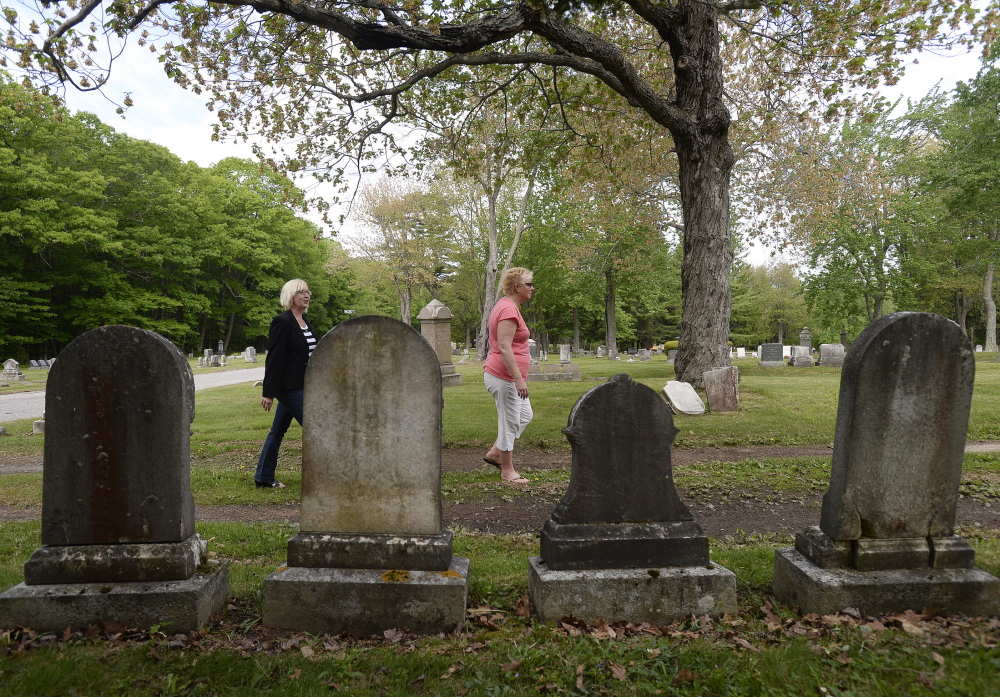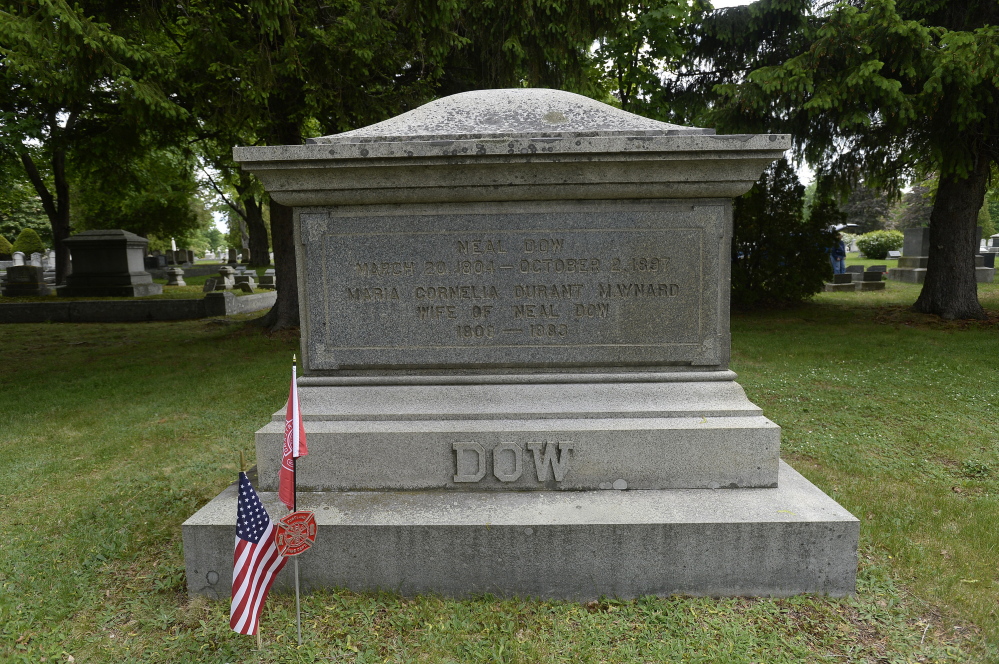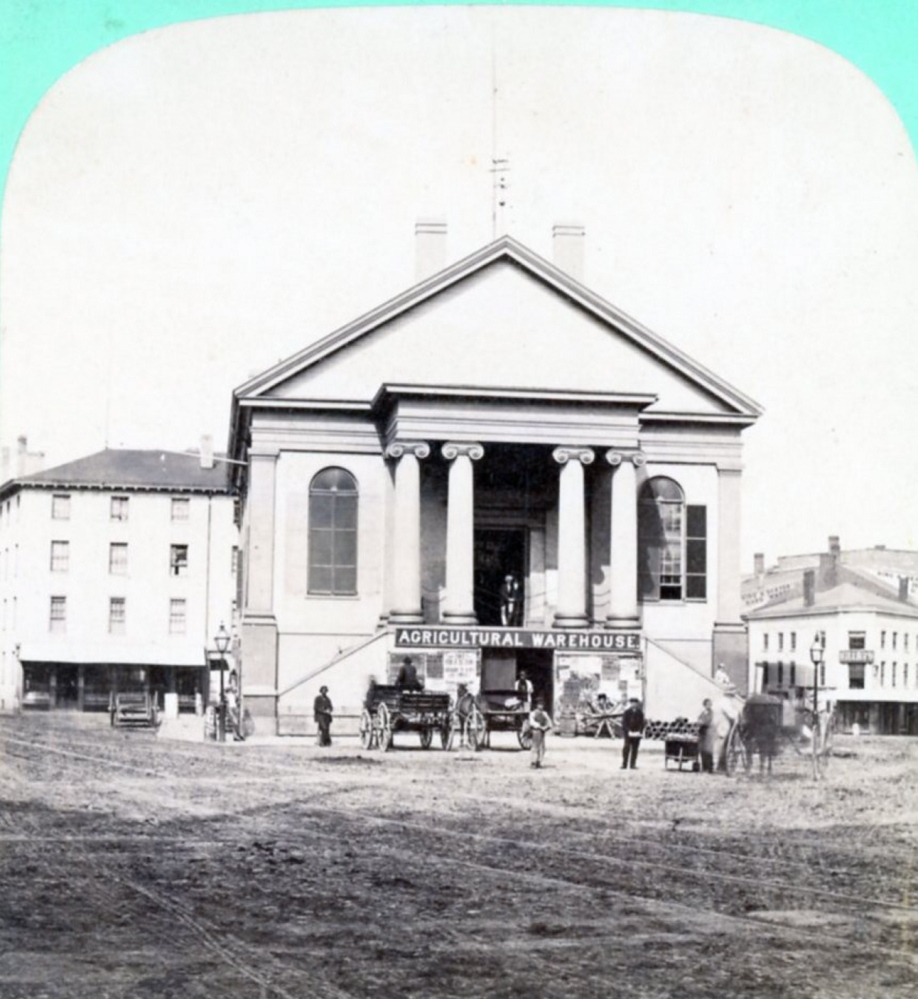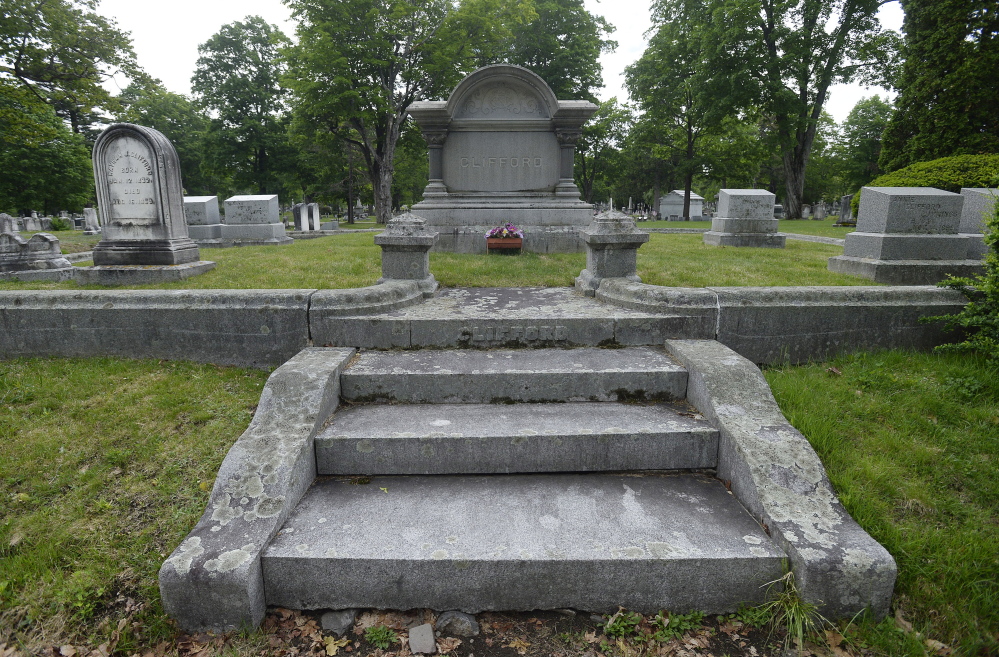Tensions mounted throughout the day 160 years ago, when an angry mob of about 2,000 men and boys attacked the old Portland City Hall, which stood on Congress Street near today’s Monument Square.
By the end of June 2, 1855, one man was dead and several were wounded in the Portland Rum Riot, an event that foretold the troubles to come with national Prohibition and sullied the reputation of then-Mayor Neal Dow.
The same year, Charles H. Howe’s prize-winning pastoral design was selected for Evergreen Cemetery, a new park-like burying ground that was being developed on 55 acres just outside the growing city, in what was then part of Westbrook.
Evergreen was so popular when it opened that some people moved the remains of loved ones from other cemeteries so they could rest amid the gentle carriage paths, lush grassy knolls, flowering trees and serene ponds, according to “Bold Vision,” a 1999 account of the development of Portland’s parks.
Author John Neal wrote in 1874 that “the grounds have become a great attraction to visitors, and are often crowded with strangers, hour after hour … and we have established a line of horse-cars which run thither regularly every half hour.”
Starting Tuesday, the Friends of Evergreen Cemetery will celebrate the history shared by one of Portland’s most popular parks and the famous people buried there who were connected to the rum riot, including Dow, William Fessenden and Nathan Clifford.
“Portland, Prohibition & Evergreen” is the first fundraising effort by a group that formed 25 years ago to support the city-owned, still-active cemetery. Members hope to generate interest in Evergreen’s past and address mounting capital needs – hundreds of unpruned and hazardous trees, aging and neglected monuments, crumbling stone walls and statues – in the face of repeated budget cuts.
“Evergreen is the largest open green space in Portland and is used as a park by hundreds of people daily,” said Jessica Siraco, the group’s executive director. “But because it’s also a cemetery, it doesn’t get the respect and isn’t treated like the other parks in the city.”
RECALLING THE RUM RIOT
The week’s events – starting with a brief noontime ceremony in Monument Square commemorating the rum riot – provide an opportunity to bring Dow and other prominent Portlanders to life, Siraco said.
Known as the Father of Prohibition, Dow was instrumental in the pushing the state to pass a law in 1851 that banned the manufacture and sale of alcoholic beverages except for medicinal or mechanical purposes. It became known as The Maine Law and was a forerunner of the national Prohibition that was in effect from 1920 to 1933.
Herb Adams, a Portland historian, describes Dow as one of Maine’s earliest “mega-celebrities,” in league with Henry Wadsworth Longfellow.
“Like him or hate him, Neal Dow was one of the most remarkable people of the entire 19th century,” Adams said. “The 1850s echo in our own times. The political extremes were growing and the political middle ground was vanishing. The hot-button issues of the day were anti-alcohol, anti-slavery and anti-immigrant, and Portland played a hot role in all of them.”
In June 1855, Mayor Dow had his share of enemies. The Eastern Argus, forerunner of the Portland Press Herald/Maine Sunday Telegram, reported that Dow had purchased “a large quantity of spirituous liquors” in New York and stored the load at Portland City Hall. The newspaper urged the police to seize the liquor and arrest Dow for violating his own law.
The riot occurred on a Saturday night. A crowd had grown throughout the day as people waited for the authorities to take action against Dow. The masses, many of them recent immigrants, were upset that they were being denied a drink while the privileged apparently imbibed in secret.
“Occasionally during the evening, stones and brick-bats were thrown against the door of the liquor store (the storage area in City Hall), breaking the glass and sashes, and otherwise injuring the door,” the Argus reported in its June 4 account of the riot.
Dow called out the local militia to protect the city building and eventually ordered the riflemen to fire on the crowd.
By midnight Saturday, seven people were wounded and John Robbins, a 32-year-old sailor from Deer Isle, “was shot through the body and almost instantly killed.” According to the Argus, “he was to have been married (Sunday) to a young lady in this city.”
No one was ever charged with Robbins’ death. When Dow went to court to answer the liquor charges, the prosecutor was Nathan Clifford, a former U.S. attorney general who also represented Maine in Congress and was a U.S. Supreme Court justice from 1858 to 1881.
The defense attorney who won Dow’s acquittal was William Pitt Fessenden, who served Maine as a U.S. representative and senator and was secretary of the treasury under President Abraham Lincoln.
EVERGREEN CONNECTIONS
The burial monuments of Dow, Clifford and Fessenden are a few of the stops on Sue Devine’s tour of Evergreen Cemetery. A member of the Friends group, Devine is one of several people who lead regular historical tours of the memorial park on Stevens Avenue.
“I think Dow is a really interesting guy,” Devine said at his grave marker. “I just think he was a little too zealous.”
Through the years, Evergreen has been a gathering place and recreation area for many residents of Portland’s Deering Center neighborhood and beyond. Bobbi Cope, another Friends group member, grew up down the street.
“I took my baby sister to see the duck ponds,” Cope recalled as she pushed granddaughter Daisy Cope in a stroller. “A lot of people learned to ride bikes here, learned to drive here, went parking here.”
In recent years, however, Evergreen has struggled to keep up with the ravages of time, weather and neglect. Many trees are overgrown, so they regularly drop limbs and damage monuments.
The estimated cost to prune and remove hazardous trees is $250,000, Siraco said. The city budgeted $8,000 for tree work this year, but only $4,000 was approved for spending, and $8,000 is budgeted for the coming year, she said.
The full cost to repair monuments, stone walls and other historical features of Evergreen is untallied and always growing, Siraco said.
The city’s cemetery division is understaffed and limited to regular maintenance of more than a dozen burying grounds, she said.
The Friends of Evergreen Cemetery hope that drawing connections to an exciting event in the city’s past will help generate greater support for one of Portland’s favorite open spaces.
“With all of the parks in this city, there’s so much competition for limited resources,” Siraco said. “It’s hard to advocate for Evergreen because people don’t view it as a park, but a lot of people use it as a park.”
Send questions/comments to the editors.









Comments are no longer available on this story